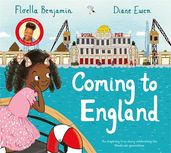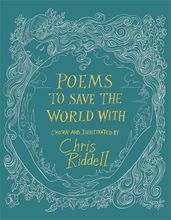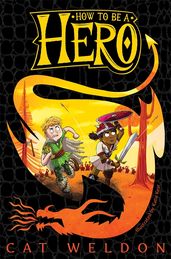The best books for teaching children resilience and empathy
Cat Weldon, author of the hilarious Viking adventure How to Be a Hero, believes the best way to teach empathy to kids and help them build resilience is through the joy of reading.
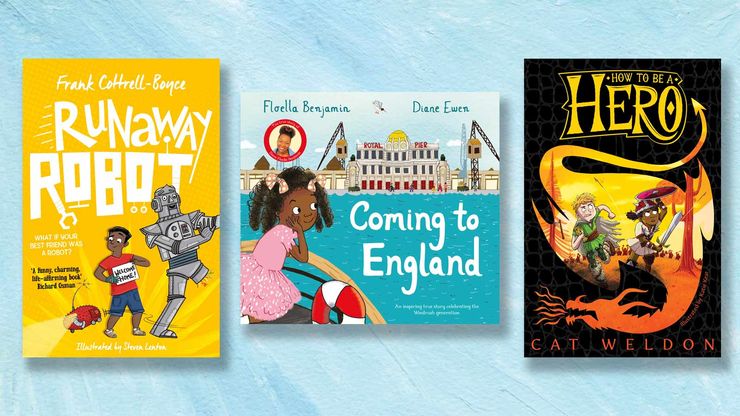
Resilience and empathy are vital life skills which are just as important for children’s future success as maths and literacy skills. A Public Health England study found that ‘social and emotional competencies have been found to be a more significant determinant of academic attainment than IQ.’ Here, Cat Weldon, author of How to Be a Hero – the first book in a hilarious and fast-paced trilogy about how to be brave – explains how reading can help children develop these emotional skills. She also recommends some of her favourite books for teaching children resilience and empathy.
Resilience has become one of the more recent buzzwords in education. Headteachers and government ministers are busily quoting studies which show that children with greater resilience are more likely to turn into successful and fulfilled adults. No one doubts the value of resilience, but the question of how to instil this skill in children and young people is trickier.
To develop resilience, a child needs to try, fail and try again. Schools provide lots of different safe and manageable ways for children to fail, be it through sports matches, exams, or winning and losing house points. But there is another way to encourage the development of resilience, and that is through combining it with empathy.
It is hard to understate the importance of empathy, the ability to put yourself in another’s place and recognise their experiences. It is this skill which allows us to forge bonds and build communities, something which is more essential than ever in these uncertain times.
This is where reading comes into its own. In no other medium are we invited into the thoughts and emotions of another in quite such an intimate and direct way. Whether the characters are a pair of acquisitive magpies, a one-legged robot or a teenage boy with dreams of becoming a comic book artist, we travel every step of their journey with them as silent companions, questioning their decisions and commiserating with their difficulties.
Reading about the struggles of others is a safe and emotionally resonant way for children and young people to develop resilience. Imagining yourself in the place of a favourite character and experiencing their turmoil as they stand up to bullies, test friendships to the limit, or even face down dragons is an excellent way of cultivating both empathy and resilience.
Through reading, children and young people are safely placed in challenging situations and pushed to expand their world view. These fictionalised situations can then be used as a template for our own triumphs and embarrassments, giving readers an emotional resource to draw on in difficult times and forging resilience within us all.
The following books are all suitable for children and young people as a springboard into empathy and resilience, and many other topics besides.
Coming to England
by Floella Benjamin
This sweet story is an excellent way of introducing younger children to the Windrush Generation and recent British history. Being an autobiography, Coming to England is grounded in the real world and allows children to draw parallels between their lives, the lives of their older relatives and the life experiences of people different to themselves. Coming to England encourages empathy and understanding from a young age in a way that is accessible and easy to digest.
Too Much Stuff
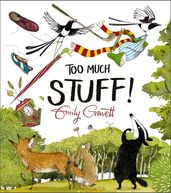
It can be difficult for any of us to decide when we have too much stuff, especially young children. Children will empathise with the characters of two magpies who get so carried away preparing their nest that they forget to focus on the most important thing of all – their chicks! Too Much Stuff explores consumerism and being overwhelmed by your possessions in a way that children will relate to, and can also be used to stimulate conversations on the environment and advertising.
Runaway Robot
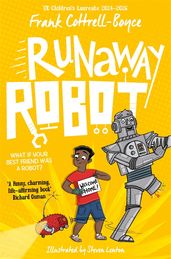
This book addresses a number of difficult themes, all with a light and humorous touch. The main character has lost a hand, the robot of the title has lost a leg, and they are both dealing with processing difficult memories connected to their accidents. Through teamwork, determination and that all-important resilience, the two characters forge a friendship which will ultimately bring them both to success. Runaway Robot also introduces the tragic legacy of landmines and the ongoing consequences of war.
Poems to Save the World With
by Chris Riddell
Responding to poetry is a keystone of the English curriculum but the topic can feel staid and lacking in relevance. This collection of poems has been carefully selected to provide hope and stir the emotions in these uncertain times. Perfect to dip in and out of, this collection of poems (both familiar and surprising), could provide the stimulus for original pieces of English, drama or art.
Kick the Moon
by Muhammad Khan
Ilyas is fifteen, and he’s dealing with a lot. Kick the Moon covers a myriad of themes which come from the heart of any PSHE (Personal, Social, Health and Economic) lesson: bullying, racism, representation, and dealing with family and societal expectations. The text feels fresh and modern and could kickstart a conversation on any number of citizenship and PSHE topics, including toxic masculinity, and what happens when your friends stop being your friends.
Goodbye, Perfect

Goodbye, Perfect dances on the sliding sands of teenage female friendship, effectively capturing the changing nature of these intense and consuming relationships. Eden and Bonnie have been best friends since they were eight, but now Bonnie had a secret. Goodbye, Perfect asks the question: how well can you truly know your friends, and how far would you go to help them? It also addresses the important safeguarding topic of grooming and inappropriate adult-child relationships, subjects which are becoming increasingly visible in modern society.
Discover How to Be a Hero, the first book in a trilogy about how to be brave, what it means to be a hero and just how confusing the Norse Gods really are.
How to Be a Hero
by Cat Weldon
Fans of How to Train Your Dragon and Who Let the Gods Out will adore this hilarious tale of Lotta, a failing trainee valkyrie. When Lotta mistakes unconscious Viking thief Whetstone for a fallen hero, she takes him triumphantly back to Valhalla. Lotta is desperate to cover up her mistake, and Whetstone has a mistake of his own to fix, so the two embark on a quarrelsome journey to regain their heroic status. When Loki the trickster God gets involved, can Whetstone prove he really is a hero?
If you loved our selection of resilient reads, explore our top picks for the best children's books
